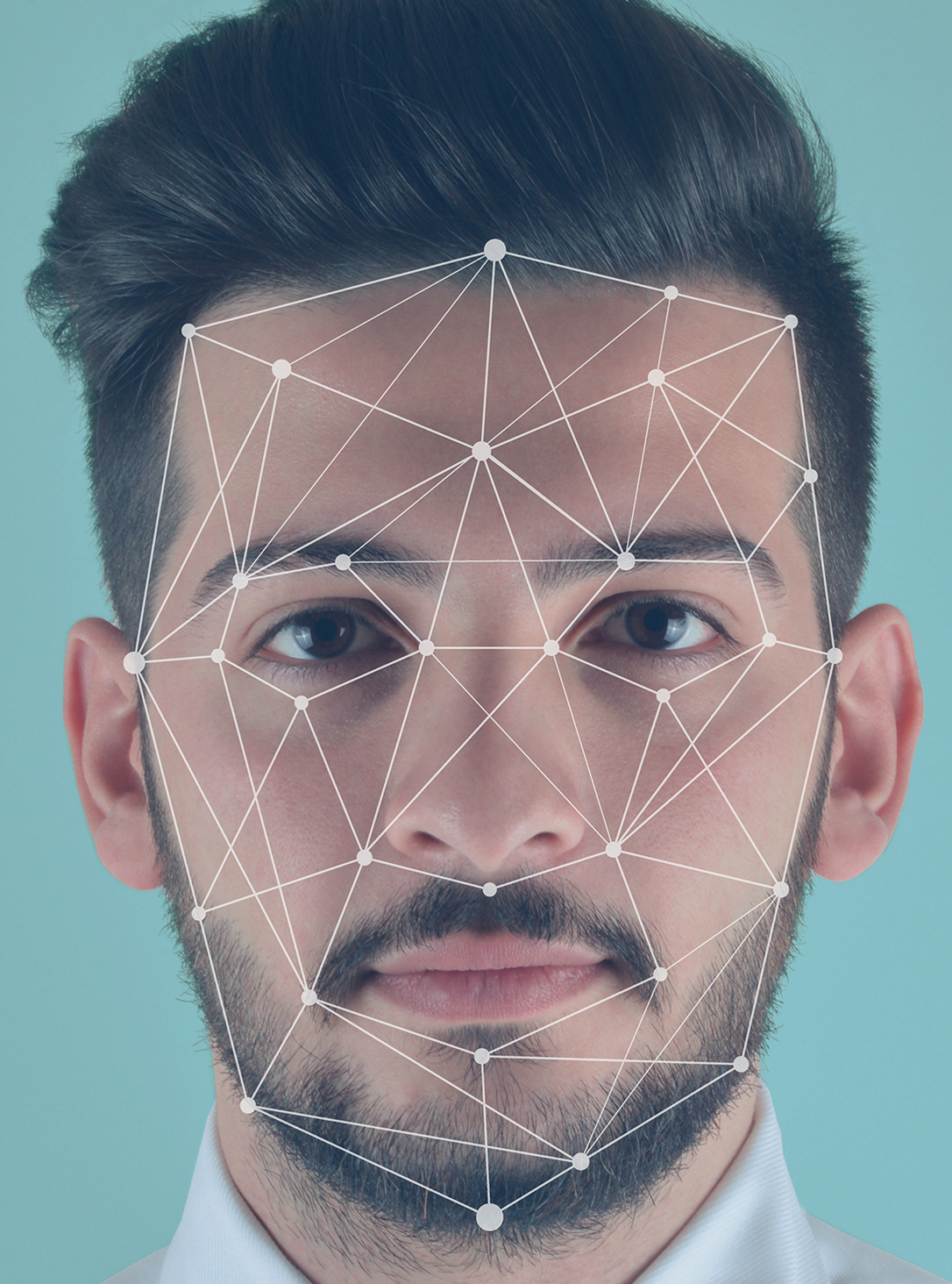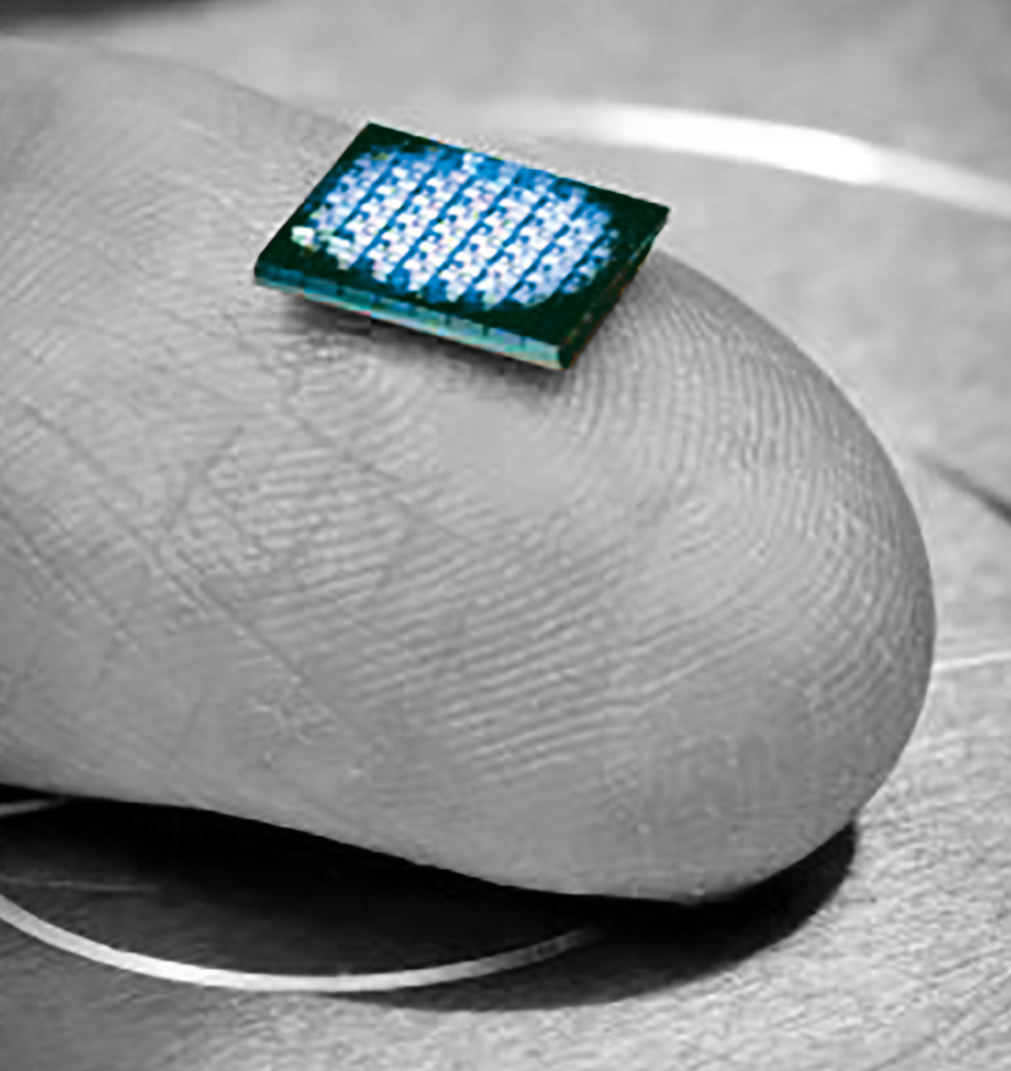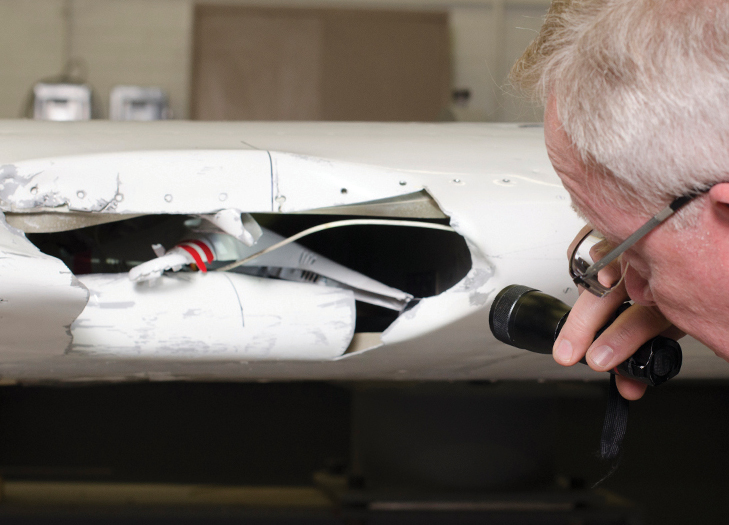THE GREAT SCIENCE FICTION WRITER AND FUTURIST Arthur C. Clarke once declared that technology is indistinguishable from magic. No doubt because, whatever the gadget, you can guarantee there’ll be a half-crazed individual, waving their arms furiously and uttering arcane exclamations—of the sort Dumbledore probably wouldn’t have learned from his mother.
We human beings enjoy—if that’s the correct word—a somewhat precarious relationship with our technological creations. Take, for example, smartphones. Always-on, high-bandwidth internet with 95 percent coverage has its obvious appeal. But when it invades your privacy, erodes your free time, and then refuses to work when you need it most (“Siri, where’s the fucking car…”), you begin to ask yourself… why? Sometimes, owning a Hitchhiker’s Guide to the Galaxy–style pocket widget that’s able to regurgitate whatever morsel of knowledge your brain desires with one clumsy stab of the thumb—all from the comfort of your favorite toilet seat—doesn’t seem worth the bother.
That said: Anyone touches my phone and they’re dead.
Technology is the science of invention. It began when an anonymous caveperson picked up a stick and realized that whacking their lunch, and indeed their enemies, over the head with it was far more effective than resorting to bare fisticuffs alone. Fast-forward 2.5 million years and, along with replacing the sticks with assault rifles, we’ve managed to surround ourselves with all manner of other labor-saving modern conveniences.
Perhaps the best example of useful tech emerging from seemingly abstract science was provided by quantum mechanics. The physics of the very small, this determines how tiny subatomic particles of matter behave. In particular, it governs how electrons (those negatively charged particles, which, when sloshing around inside a wire, become known collectively as “electricity”) interact with so-called semiconductors—materials that in some ways behave like conducting metals and in other ways are like insulators. Semiconductors are the building blocks of electrical junctions called transistors, which in turn are key to the construction of modern computers. And computers, as if I need to tell you, are in everything from your dishwasher to your smart TV. And in your computer, obviously.
Even Albert Einstein’s wacky old theory of relativity has found its killer app—telling scientists how to adjust satellite signals to take into account the distorting effects of the Earth’s gravitational field. The stark fact is that without relativity your sat-nav system simply wouldn’t work. So next time you fail to get lost on your way to visit those awful relatives, remember to thank Einstein.
There are some other fairly brilliant inventions that the modern world just wouldn’t be the same without. In 1926, Scottish engineer John Logie Baird became the first to demonstrate the transmission of moving pictures—what we would now call “television.” Though perhaps mercifully, he was long dead by the time The Big Bang Theory became a thing. In 1875, Alexander Graham Bell, another Scot, filed a patent for the “acoustic telegraph,” which was the first example of a telephone. Telemarketing soon followed in the early 1900s. And in 1886, an early gasoline-powered motor car was developed by German engineer Karl Benz. While his buddy Otto Bahn built the first road. (Actually, I made up that last one.)
Meanwhile, in 1791, France gave us the guillotine. While many other technological innovations have been the sole province of the well-heeled, the guillotine stood out as a notoriously effective means for leveling the socioeconomic playing field.
Other gadgets and gizmos have been less well received. No one’s really likely to lament the apparent demise of Tamagotchis, Crocs shoes, or the Segway, for example. And it can certainly be argued that the world today might be a far nicer place without the likes of plastic bags, CAPTCHA, and pop-up advertising. Safe to say, these particular genies won’t be climbing back into the bottle any time soon.
In this chapter, we bring you up-to-date on some of the most significant and not so significant—yet still highly amusing—technological breakthroughs that are taking shape in labs around the world.
Scientists discover why drones and airports really don’t mix by chucking store-bought plastic quadcopters at airliners as hard as they possibly can. Which, if nothing else, is further proof that science is in fact a lot more fun than your school teachers may have led you to believe.
After various data breach scandals, and concerns over how social media companies use our data, we are proud to show you the simple way to download every scrap of info that Facebook holds about you. Mine amounted to a photo album of the last 10 years, along with transcripts of several hundred arguments. Oh, and a list of “ad preferences” that were clearly racked up by my evil twin from a parallel universe.
We meet the Star Trek–style, engine-less, electric airplane, air transport that somehow manages to drift along with no moving parts whatsoever—a bit like Air France. Meet the scientists who have managed to turn human excrement into fuel. As one does. And check out the phone battery that only needs to be charged once a week.
Plus, can you guess the novel way users of adult meta site Pornhub chose to celebrate the wedding of Britain’s Prince Harry to Meghan Markle? Hint: Harry wasn’t the only one rushing to an appointment with the bishop.
Alexa, order more tissues…
1
“SUICIDE MACHINE” THAT LETS YOU EXPERIENCE DEATH IS NOW AVAILABLE FOR THE PUBLIC TO TRY
by Madison Dapcevich
CHEER UP. DEATH COULD BE AS EASY, QUICK, AND PAINLESS as pressing a button. At least, that’s what the creator of the world’s first 3D-printed “suicide machine” intends for the future.
In April 2018, Dr. Philip Nitschke and his organization Exit International announced plans to debut the suicide-assisting machine “Sarco” (short for sarcophagus) at Amsterdam’s Funeral Fair. You can even try it out for yourself—at least, in virtual reality—by stepping inside a full-size depiction of the euthanasia capsule. VR glasses give the user a glimpse into what assisted dying might actually be like.
Plans for 3D-printing the capsule will be available on the internet, according to Nitschke, who said the device can be assembled anywhere to “allow a person a peaceful passing” at a location of his or her choosing.

Potential users of the real deal will have to fill out an online test to gauge their mental fitness. If they pass the test, they will then receive an access code valid for 24 hours. Once the code is entered, another confirmation from the user must be given.
The Sarco will sit on a generator using liquid nitrogen which, when released, will bring down the level of oxygen in the capsule to induce hypoxia. The brain relies on oxygen to function. When put in environments with low levels of oxygen, the body slowly begins to shut down, resulting in confusion, increased heart rate, rapid breathing, shortness of breath, sweating, and wheezing. In the Sarco, however, Nitschke said death will have “style and elegance”—within one minute, the user loses consciousness. Death follows shortly thereafter.
To activate the process, the user simply steps inside, lies down, and, when ready, presses a button.
“A Sarco death is painless. There’s no suffocation, choking sensation, or ‘air hunger’ as the user breathes easily in a low-oxygen environment. The sensation is one of well-being and intoxication,” wrote Nitschke in The Huffington Post.
Critics argue that legalizing a person’s “right to die” could normalize suicide, be difficult to regulate, and that it will degrade the value of life. But Nitschke, who performed his first legal assisted death in 1996, argues that the option to end one’s life voluntarily is a civil right.
“The Sarco is intended to get people talking positively about death, and with broader considerations than being afraid, scared, or shocked,” he said in a statement. “After all, we are all going to die. Increasing numbers of us want some say in how we are going to die.”

2
PORNHUB’S DATA SHOWS SOMETHING HILARIOUS HAPPENED DURING THE ROYAL WEDDING
by James Felton
EVERY NOW AND THEN, THE INTERNET PORNOGRAPHY website Pornhub releases data on its users. It’s often grim, and frequently hilarious, but occasionally it reveals an interesting insight into human behavior.
In 2018, Pornhub released data on the effect that the UK royal wedding, held on May 19 that year, had on people’s pornography habits around the world. It reveals some rather odd ways people across the globe honored the couple, choosing to celebrate through the medium of cranking one out.
First, here are the respectful bits. Out of a sense of duty to the royal family, the world eased off on jacking it for most of the duration of the wedding.
Worldwide, people stopped paying a one-handed salute to Prince Albert long enough to watch Prince Harry marry Meghan Markle. Traffic dipped 10 percent globally, slightly less than the whopping 21 percent it went down in the UK, compared to a normal Saturday.
England and Wales were the most likely to stop “doffing their hat to her majesty” during the ceremony. At noon, when the vows took place, England was watching 21 percent less porn than normal. Meanwhile in Scotland, where there is (according to the pollster ICM) less support for the royal family, there was only a 14 percent downturn in traffic during the ceremony.
This gracious tribute continued across the Commonwealth. In Australia, viewing figures went down 17 percent, in New Zealand 18 percent, and Canada 16 percent. Weirdly, though, France seemed to be the most respectful of all, as viewing figures there slumped a whopping 23 percent.
Now, here’s where it gets a bit sordid. The data from Pornhub also looked at search terms surrounding the royal wedding. In the days leading up to the wedding, searches on the site containing the word royal rose a spectacular 1,865 percent, and prince and princess also saw a spike as people… got in the mood for the big event?
Grimmest of all, though, searches for Meghan Markle skyrocketed, going up 2,812 percent.
Interest in celebrities who attended the wedding was also up, with searches for Victoria Beckham, David Beckham, and various co-stars of Meghan Markle’s former TV show Suits all seeing massive increases.
Check out the rest of the data for yourself on the Pornhub Insights website (https://www.pornhub.com/insights/). It’s safe for work, though you might still want to look when you’re at home, just in case you trip the IT department’s porn filter.

4
THE US HAS LOST FIVE NUCLEAR WEAPONS. SO WHERE THE HELL ARE THEY?
by Tom Hale
KEYS, PHONES, SOCKS, THERMONUCLEAR WEAPONS—some things just don’t seem to stay where you put them.
Believe it or not, the US has lost at least five atomic bombs, or samples of weapons-grade nuclear material, since it began developing nuclear weapons in the 1940s.
Not only that, but the US is responsible for at least 32 documented instances of a nuclear weapons accident, known as a “broken arrow” in military lingo. These atomic-grade mishaps can involve an accidental launching or detonation, a theft, or a loss—yep, loss—of an operational nuke.
FEBRUARY 13, 1950
The first of these unlikely instances occurred in 1950, five years after the first atomic bomb was detonated. In a mock nuclear strike against the Soviet Union, a US B-36 bomber, en route from Alaska to Texas, began to experience mechanical trouble. Icy conditions and a sputtering engine meant the landing was going to be nearly impossible, so the crew jettisoned the plane’s Mark 4 nuclear bomb over the Pacific. The crew witnessed a flash, a bang, and a shock wave.
The military claim the mock-up bomb was filled with “just” uranium and TNT.
MARCH 10, 1956
A Boeing B-47 Stratojet set off from MacDill Air Force Base in Florida for a non-stop flight to Morocco with two “nuclear capsules” onboard. The jet was scheduled for its second mid-flight refueling over the Mediterranean Sea, but it never made contact. No trace of the jet or the nuclear material has ever been found.
FEBRUARY 5, 1958
A B-47 bomber with a 7,500-pound (3,400-kg) Mark 15 nuclear bomb onboard accidentally collided with an F-86 aircraft during a simulated combat mission. The battered and bruised bomber attempted to land numerous times, but to no avail. Eventually, the crew made the decision to jettison the payload into the mouth of the Savannah River near Savannah, Georgia. Luckily for them, the bomb did not detonate. However, it remains “irretrievably lost” to this day.
JANUARY 24, 1961
The wing of a B-52 bomber split apart while on a mission above Goldsboro, North Carolina. Onboard were two 3.8-megaton nuclear bombs. One of these successfully deployed its emergency parachute, while the other fell and crashed to the ground. The unexploded bomb landed on farmland around the town and, while wreckage has been recovered, the warhead is still missing. In 2012, North Carolina put up a sign near the supposed crash site to commemorate the incident.
DECEMBER 5, 1965
An A-4E Skyhawk aircraft, loaded with a nuclear weapon, rolled off the back of an aircraft carrier, the USS Ticonderoga, and fell into the Philippine Sea off Japan. The plane, pilot, and nuclear bomb were never seen again.
In 1989, the US eventually admitted that the bomb was still lying on the seabed around 80 miles (128 km) from a small Japanese island. Needless to say, the Japanese government and environmental groups were pretty pissed about it.
7
FACEBOOK HAS A “SECRET FILE” ON YOU. HERE’S HOW YOU CAN VIEW IT
by Jonathan O’Callaghan
EVER WONDERED WHAT DATA FACEBOOK IS KEEPING about you? Well, it’s pretty easy to see—but you might not like what you find.
Facebook stores a lot of personal data on its users, including images, adverts you’ve clicked on, conversations, documents shared on Messenger, and much more. It’s not alone in doing this, mind. Google, for example, keeps pretty close tabs on its users, too.
So Nick Whigham, a reporter for the New Zealand Herald, decided to find out just how much Facebook knew about him. He was surprised to discover it had collected a huge amount of data, some of which he didn’t even know existed.
“It included scanned copies of lease forms from a previous rental property I must’ve sent to my buddies over Messenger, my current tenant ledger report, an old monthly billing statement for my home broadband, screenshots of banking transfers and seemingly endless web pages of all the banal conversations I have ever had on the platform,” he wrote. “It’s an odd feeling to think that, in some ways, Facebook knows you better than you know yourself.”
The site also stores facial recognition data, names and numbers from your contact list, where you’ve been on the internet, and much more.
You can find out the cache of data Facebook has on you pretty easily. All you need to do is log in, click the small “down” triangle in the top-right corner of any Facebook page. From here, click “Settings,” then go to “Your Facebook information” in the left-hand bar. From there you can either view or download your data. Facebook has argued previously that it harvests data—openly, mind, not in secret—in order to keep the platform free.
“We work with third-party partners who help us provide and improve our Products or who use Facebook Business Tools to grow their businesses, which makes it possible to operate our companies and provide free services to people around the world,” Facebook noted in its data policy.
Whether you’re willing to hand Mark Zuckerberg the keys to your life in order to keep the platform free is, of course, up to you.
9
THOUSANDS OF MISSING CHILDREN IN INDIA IDENTIFIED THROUGH FACIAL RECOGNITION PILOT EXPERIMENT
by Aliyah Kovner
ACCORDING TO THE INDIAN NEWS OUTLET NDTV, NEARLY 3,000 missing children were located in New Delhi within four days of the city police department adopting an experimental facial recognition system (FRS) software program. That’s a significant improvement over the milk carton approach (where notices of missing children are printed on the sides of milk cartons).
Tracking the thousands of children who disappear each year in the 1.3-billion-person nation is an enormous undertaking. According to India’s Ministry of Women and Child Development, more than 240,000 children were reported missing between 2012 and 2017, although the real number is probably higher. Some organizations estimate that the true number of missing children is close to 500,000 per year.

To aid recovery efforts, the ministry established a nationwide online database called TrackChild, where photographs of missing and found children can be posted and viewed, and police information can be shared between agencies and with citizens.
And yet, although this digital resource has become a helpful tool, the backlog of photographs is still too much for officials to handle.
So, a child welfare organization called Bachpan Bachao Andolan (BBA) developed the FRS software to automate TrackChild’s photo comparison process. Details of the particular facial recognition algorithm that this program uses are not available, but there are two main approaches—geometric and photometric.
Geometric (also known as feature-based) algorithms analyze and compare faces by mapping the distance between features and noting facial landmarks, whereas photometric algorithms break images down into pixel-by-pixel data from which shade gradients can then be calculated and compared. Photometric algorithms require many reference images before comparisons can be made, so it’s more likely the Delhi FRS uses the geometric approach.
Due to bureaucratic issues, the FRS pilot project was not implemented until pressure was applied by the Delhi High Court. Yet, once approved, the FRS was immediately able to identify 2,930 children from 45,000 images fed in from the TrackChild database.
“India currently has almost [200,000] missing children and about 90,000 lodged in various child-care institutions. It is almost impossible for anyone [to] manually go through photographs to match the children,” BBA activist Bhuwan Ribhu told news website The Better India.
“It is immaterial whether other police departments use the software or not. Even if one department has this software, then running it through all their databases, under the Ministry of Women and Child Development, will throw up the requisite results, which can be shared with the other departments.”
10
SCIENTISTS HAVE CREATED A STAR TREK–LIKE PLANE THAT FLIES USING “ION THRUSTERS” AND NO FUEL
by Jonathan O’Callaghan
SCIENTISTS HAVE TAKEN A MAJOR STEP TOWARD CREATING an aircraft of the future, one powered by an ion drive, rather than using moving parts and fuel, like conventional planes and helicopters.
In a paper published in November 2018 in the journal Nature, a team led by Steven Barrett from the Massachusetts Institute of Technology (MIT) described how they created a so-called electroaerodynamic-powered plane, one that uses electrically powered solid-state propulsion, meaning no propellers or jet engines, and no combustible fuel.
“The future of flight shouldn’t be things with propellers and turbines,” Barrett said. “[It] should be more like what you see in Star Trek, with a kind of blue glow and something that silently glides through the air.”
In their tests from 2016 to 2018, the team created an aircraft with a wingspan of 16 feet (5 meters) that weighed 5.4 pounds (2.5 kg). It has a number of thin electrodes running across its wings, and at the front of these are thin wires, while at the back is an aerofoil—a curved surface to produce the lift, just like on a regular plane wing.
The thin wires at the front are charged to positive 20,000 volts, while the aerofoil at the back is charged to negative 20,000 volts, creating a strong electric field. At the front, electrons are removed from nitrogen molecules in the air to produce ions. And as these accelerate to the back, they produce an ionic wind, which gives the plane thrust.
“The basic idea is that if you ionize air, which means removing an electron from it, you can accelerate the air with an electric field,” Barrett told IFLScience. “Like the force you get if you rub a balloon on your head.”
Over the course of 10 test flights, the plane successfully flew 200 feet (60 meters) in about 12 seconds in a gym that the team rented, with a thrust efficiency of about 2.6 percent. But as the speed increases, the efficiency of the system increases, just as in a regular plane. Theoretically, at 670 miles (1,080 km) per hour—faster than a passenger jet—it is 50 percent efficient.
The technique is similar to the ion engines used in some spacecraft for propulsion outside of the Earth’s atmosphere. These devices electrically accelerate charged fuel particles to create a high-speed exhaust jet behind it, propelling the spacecraft in the opposite direction.
“There are some significant similarities,” said Barrett. However, those spacecraft rely on ionizing a fuel—such as xenon gas—to produce thrust. The plane developed by the MIT team does not require propellant, instead relying only on the thin wires and an off-the-shelf, lithium-polymer battery to ionize the surrounding air.
At the moment the technology is limited, but the future possibilities are exciting. In the near term, this thrust system could be used to power small drones, making them nearly silent because they wouldn’t have any propellers.
“I don’t yet know whether you’ll see large aircraft carrying people any time soon, but obviously I’d be very excited if that was the case,” Barrett added.


11
YOUR DREAM OF BEING ABLE TO BREATHE UNDERWATER MAY SOON BE A REALITY
by Katy Evans
IF YOU COULD HAVE A SUPERPOWER, WHAT WOULD IT BE? Other than flying and telepathy (which, let’s be honest, would probably be quite awful), breathing underwater is one of the favorites. You could hang out with Aquaman and Ursula (sorry, Ariel, but she looks more fun), and when the apocalypse comes and we’re all living underwater, you’ll be fine.
With this in mind, a student at the Royal College of Art, London, has designed an amphibious garment called AMPHIBIO—essentially a set of gills—for this very purpose. According to Jun Kamei, a biomimicry designer and materials scientist interested and inspired by nature’s hidden design, it is “for a future where humankind lives in very close proximity with water.”
Indeed, with the world set for a global temperature increase of several degrees by 2100, rising sea levels are a very real threat to large coastal cities, potentially affecting up to 2 billion people—or 26 percent of the current global population.
Kamei’s nifty little device uses a specially designed, porous, hydrophobic material that draws in oxygen from the water and releases carbon dioxide. It is inspired by water-diving insects that create their own little scuba diving set with a protective bubble of air around their body, thanks to their water-repellent skin.
The technology is easily 3D-printable, too, which will be great for when we need them en masse. These “gills” could replace heavy and cumbersome scuba equipment, making it more akin to free diving. This could have immediate applications for underwater emergency scenarios—the 12 boys rescued by divers from a flooded cave in Thailand, for example, where it took weeks to figure out how to get the boys and the vital breathing equipment through the narrow tunnels.
So far, the tech has not been tested on people, so the dream isn’t quite a reality yet. But scaling up and human testing are next.
Planning for a flooded world may all sound rather dystopian, but Kamei insisted that he has a much more optimistic vision of the future. He thinks AMPHIBIO could provide “daily comfort to people who [may have to] spend as much time in the water as on the land,” even suggesting it could be used in “a world where a human would have a peaceful touristic dive in the neighboring church, or a night dive in the vivid streets.”
When you put it like that, it sounds rather wonderful.
12
IBM HAS BUILT THE “WORLD’S SMALLEST COMPUTER” THAT CAN BE PUT “ANYWHERE AND EVERYWHERE”
by Robin Andrews
IBM IS NOTHING IF NOT AMBITIOUS. FROM USING “CROWD-sourced supercomputers” to tackle climate change to trying to win the race in quantum computing, it’s always got one foot in the future—and, based on a new development first spotted by Mashable, that future is becoming ever smaller.
In a blog post uploaded prior to Think 2018, IBM’s showy-off conference spectacular, the company unveiled—in-between lattice cryptography and AI-powered robot microscopes—what IBM claims is the world’s smallest computer.
“Within the next five years, cryptographic anchors—such as ink dots or tiny computers smaller than a grain of rock salt—will be embedded in everyday objects and devices,” the post casually noted. The accompanying image showcases an array of 64 motherboards, so small they all fit on the end of a human finger. Two separate record-breaking computers can be seen in the top-left corner of this array with plenty of room to spare.

So what exactly are they? Details remain fuzzy, but schematics show that it has a full-fledged processor, memory components, and up to 1 million transistors on a 1 x 1 millimeter–sized board. It’s about as powerful as a chip from the x86 PC family from 1990, which is pretty good, considering those chips were magnitudes larger in size.
The primary focus with these tiny computers isn’t their eye-catching dimensions, however, but protection from counterfeiters. Noting in an accompanying video that “fraud costs the global economy more than $600 billion a year,” IBM talked about blockchains. These are ongoing records or ledgers that, using complex cryptographic technology, record the who, when, where, and what details of online transactions. Blockchain was originally used in bitcoin transactions to ensure their authenticity and security.
This new miniature computer is designed to bring that technology into the physical realm. IBM appears to want to use them as “tamperproof digital fingerprints,” whose cheap manufacturing costs (10 cents per unit) and tiny size ensures that, within five years, they can easily be embedded in a plethora of products being shipped around the world. As IBM explained, it can be “put anywhere—and everywhere.”
These hack-resistant fingerprints, also called “crypto-anchors,” will be used to authenticate a product’s origin, contents, buyers, and sellers, much like a hands-on form of blockchain.
There’s even talk of crypto-anchors that take the form of edible ink, which could be used, for example, to mark pharmaceuticals in order to prove their authenticity. “Even liquids like wine can be verified,” they added.
Forget the tiny computer chip, then. The future isn’t so much small as it is practically invisible.

13
THIS IS WHAT HAPPENS WHEN A DRONE SLAMS INTO A PLANE’S WING AT HIGH SPEED
by Rachel Baxter
IN THE RUN-UP TO CHRISTMAS 2018, DRONE SIGHTINGS near London Gatwick halted flights in and out of the airport. But what risks do these remotely piloted aircraft really pose? You might think that it would be virtually impossible for a little drone to do much damage to a large airliner. But, worryingly, that seems to be far from the case.
Researchers at the University of Dayton Research Institute (UDRI) tested what would happen if a drone hit a large commercial plane’s wing traveling at 238 miles (383 km) per hour, and the result was a little alarming. The findings were presented at the fourth annual Unmanned Systems Academic Summit in August 2018.
“We wanted to help the aviation community and the drone industry understand the dangers that even recreational drones can pose to manned aircraft before a significant event occurs. But there is little to no data about the type of damage UAVs [unmanned aerial vehicles] can do, and the information that is available has come only from modeling and simulations,” said Kevin Poormon, group leader for impact physics at UDRI, in a statement.
“We knew the only way to really study and understand the problem was to create an actual collision, and we’re fully equipped to do that.”
The drone was a 2.1-pound (0.9-kg) DJI Phantom 2 quadcopter and the plane wing was chosen to represent the leading edge structure of a commercial transport plane.
To the team’s surprise, the drone managed to create a rather large hole as it violently crashed into the side of the wing.
“While the quadcopter broke apart, its energy and mass hung together to create significant damage to the wing,” said Poormon.
Poormon and his colleagues also looked at how bird strikes compared to the damage caused by a drone. They fired a “gel bird,” of similar weight to the drone, at the wing and looked at how the two objects’ impacts differed. They manipulated speed, orientation, and trajectory to make the crashes as realistic as possible.
“Drones are similar in weight to some birds, and so we’ve watched with growing concern as reports of near collisions have increased,” said Poormon.
“The bird did more apparent damage to the leading edge of the wing, but the Phantom penetrated deeper into the wing and damaged the main spar, which the bird did not do.”

In September 2017, a drone collided with a military helicopter just east of Staten Island in New York. The helicopter was damaged, but managed to land safely. And there have since been numerous accounts of near misses.
Poormon noted that more research is needed to find out how drones impact other parts of a plane, such as the windshields and engines. For now, it seems they could pose more of a threat to large aircraft than we might have liked to assume.
16
HERE’S WHY YOU SHOULD PROBABLY WRAP YOUR CAR KEYS IN TINFOIL
by Jonathan O’Callaghan
AS TECHNOLOGY EVOLVES, SO DOES THIEVERY. AND while that keyless fob might make getting into your car pretty easy for you—automatically opening the doors without you even having to press a button—it turns out that it’s quite easy to hack.
With an unprotected fob, thieves can intercept the signal to your car with a special receiver, in a procedure known as a “relay attack.” They can then use this to enter the car and even turn on the ignition. But there’s a simple solution: It appears that just wrapping your fob in foil prevents the signals from being transmitted.
“Although it’s not ideal, it is the most inexpensive way,” Holly Hubert, a cybersecurity expert, told the Detroit Free Press. “The cyber threat is so dynamic and ever-changing, it’s hard for consumers to keep up.”
According to a report by Wired.com, the attack tricks the car and your key into thinking they’re in close proximity of each other. “One hacker holds a device a few feet from the victim’s key, while a thief holds a second device near the target car,” they said. “The device near the car spoofs a signal from the key.”

While it appears that ordinary foil will prevent such an attack, Hubert suggests purchasing a Faraday bag, a small bag lined with metallic material to prevent signals from going in or out.
Speaking to ABC News, the National Insurance Crime Bureau said there had been no confirmed cases of a relay attack in the US. However, it does appear to be a known risk that car companies are trying to tackle.
In the UK, in April 2018, Bristol resident Kieran Bingham claimed someone had broken into his car with a fake keyless fob. He said that when he went in the car, he found that the glove box had been opened and items had been scattered, reports the Bristol Post.
“My thinking is someone is going round hacking wireless keys,” Bingham said. “That’s why I’ve wrapped it in foil, to stop the device from finding your keys.”
In January 2019, the consumer group Which? found that the Ford Fiesta, Volkswagen Golf, Nissan Qashqai, and Ford Focus were all at risk from relay attacks.





